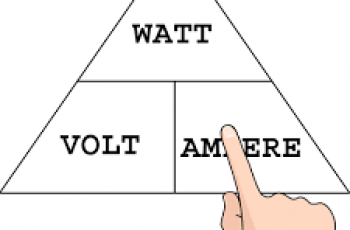Prior to discussing how to calculate potential difference, let us define it. Potential difference also known as voltage is the difference in the amount of energy that charge carriers have between two points in a circuit.
The larger the potential difference, the faster the current will flow and the higher the current. We use a voltmeter to measure potential difference expressed in volts (V).
We say the potential difference of two charges is negative if the charge at the reference point is more than the charge at the measured point and therefore the charge flows in the opposite direction.
A positive potential means that the charge of the influential particle is the same as the charge of the influenced particle.
We say the potential difference is zero if the charges do not possess the required amount of energy to overcome the resistance, therefore the flow of the charge carriers is restricted to conduct current.
Formula to Calculate Potential Difference.
We use Ohm’s Law to calculate voltage.

Example:
A current of 20 amperes travels through a circuit that has a 4 ohms resistor connected in parallel. Determine the potential difference of the circuit.

Therefore, the potential difference of the circuit is 80 V.

